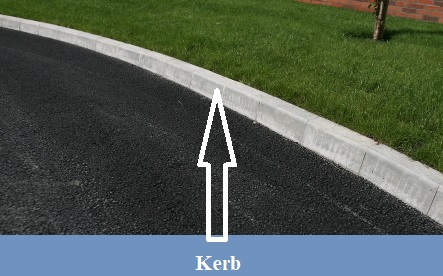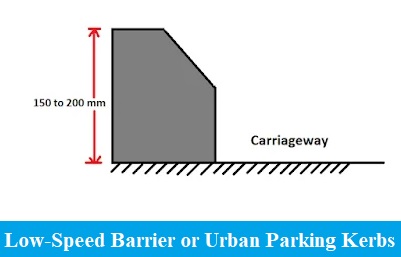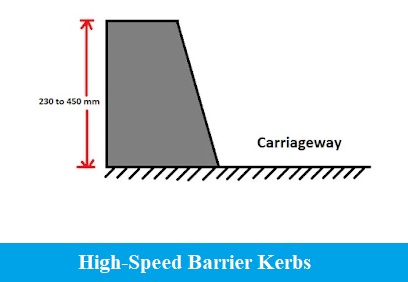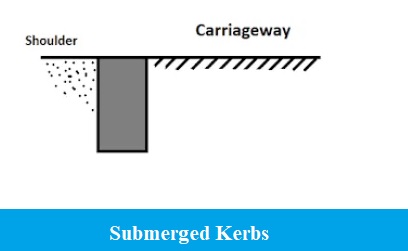A kerb is the component of a road or highway, it is also called a curb.
Kerbs are edges where a raised sidewalk meets the other road. This road can be pedestrian or street.
It creates barriers between vehicles and pedestrians. Kerbs used to create a barrier between vehicles and pedestrians. It gives an idea of the carriageway to the vehicle driver.

Normally, natural stones are used to construct kerbs but nowadays precast concrete kerbs are taking place of natural stones.
Table of Contents
Functions of Kerbs:
- Kerbs seprates road and pedestrian .
- It provides structural support to the pavement.
- Kerbs are used to channel runoff water from rain or melted snow and ice into storm drains.
- It provides esthetic to the road pavement.
- Kerbs provide safety and security for both carriageway and pedestrian.
- Kerbs are used on bus stops to ease passenger access.
Kerb Height:

Krebs’s heights normally range between 100 to 200 mm above the road surface. If it includes the underground portion then will be around 350 to 400 mm.
Types of Kerbs:
- Low or Mountable Kerbs.
- Low-Speed Barrier or Urban Parking Kerbs.
- High-Speed Barrier Kerbs.
- Submerged Kerbs.
I have described these four types of kerbs in detail.
1. Low or Mountable Kerbs

The low or mountable kerbs are otherwise called class I kerbs. The primary guideline of the kerbs is to control traffic to remain inside its path. To give encourages the driver to enter the region of the shoulder with less trouble the height of this type of kerb is low. For the longitudinal drainage system, this sort of kerb is helpful and the height of this kind of kerbs is 70 to 80 millimetres.
2. Low-Speed Barrier or Urban Parking Kerbs

The low-speed barrier kerbs are also called class II kerbs. Normally it is provided for low-speed vehicles in areas such as parking. In case of emergency, the vehicle can run over the shoulder. The standard height of these kerbs kept 150 to 200 millimetres.
3. High-Speed Barrier Kerbs

These types of kerbs are known as class III kerbs. The high-speed barrier kerbs are provided where the path is critical such as bridges, mountains. The normal height of these types of kerbs is normally kept between 230 to 450 millimetres.
4. Submerged Kerbs

The submerged kerb is also called the class IV kerb. This type of kerbs is also constructed for rural roads at pavement edges between edges and shoulders. To give lateral stability to the granular base course and flexible pavements. It is constructed with the help of bricks or concrete blocks.
